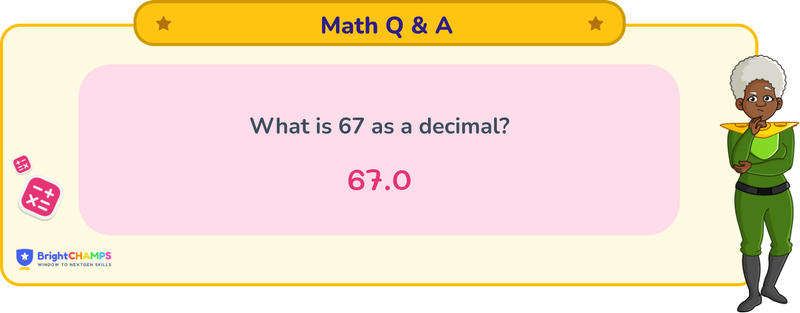Summarize this article:
 290 Learners
290 LearnersLast updated on August 5, 2025
67 as a decimal

Converting a fraction to a decimal is a simple process. First, we need to understand both fractions and decimals. A fraction represents a part of a whole and consists of a numerator (the top number) and a denominator (the bottom number). The numerator indicates how many parts are being considered, while the denominator indicates how many equal parts make up a whole. A decimal represents non-whole numbers using a decimal point to separate the whole part from the fractional part. The numbers to the left of the decimal point represent the whole part, while those to the right represent the fractional part.

What is 67 as a decimal?
 Answer
Answer
67 can be written as 67.0 in decimal form.
Explanation
67 is already a whole number, so it remains 67 when expressed as a decimal. To indicate its decimal form, we can add a ".0" to show there are no fractional parts.
Step 1: Understand that 67 is a whole number and does not have a fractional component.
Step 2: In decimal notation, whole numbers can be expressed with a ".0" to clarify that there are no decimals.
Step 3: Thus, 67 becomes 67.0, which is its representation in decimal form.

Important Glossaries for 67 as a decimal
- Whole Number: A number without fractions; an integer.
- Decimal: A numerical representation that uses a decimal point to distinguish the whole number from the fractional part.
- Numerator: The top part of a fraction, indicating how many parts of the whole are being considered.
- Denominator: The bottom part of a fraction, showing how many parts make up a whole.





